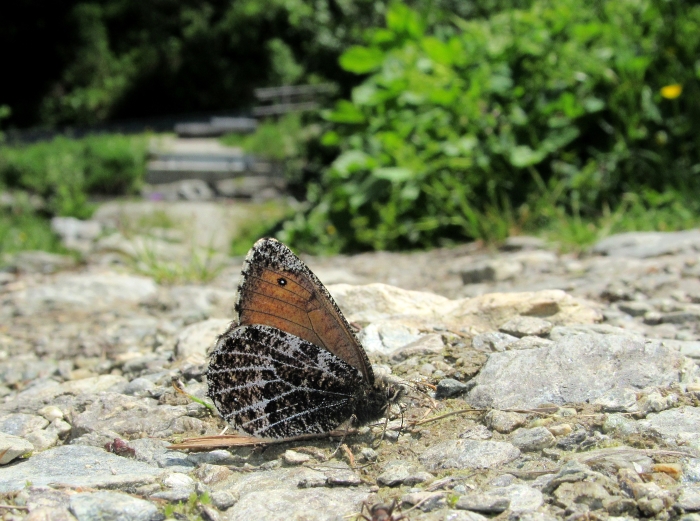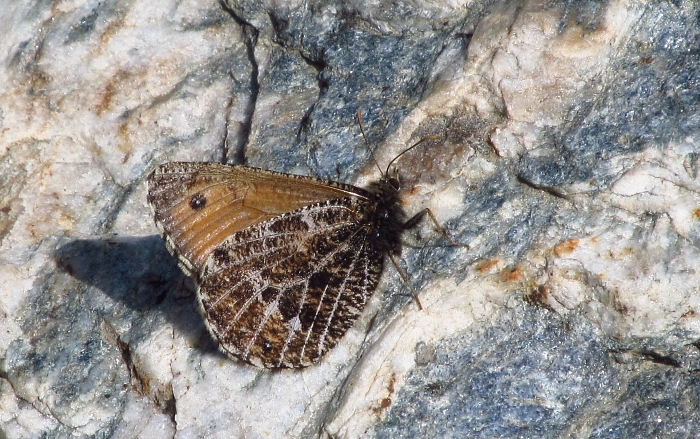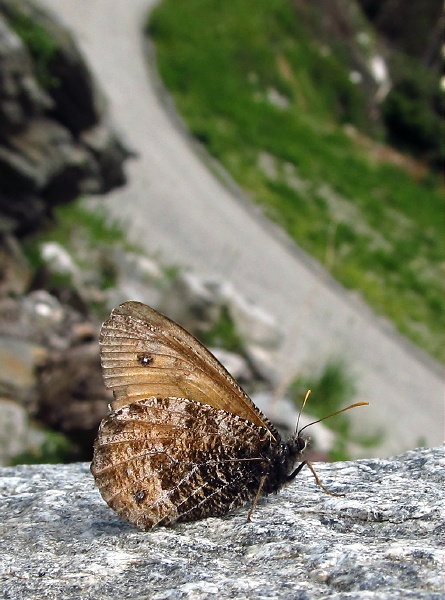
Oeneis glacialis
Refresh page if pictures don't load fully:

Switzerland, July 2013

Switzerland, June 2018

Switzerland, July 2017

Switzerland, July 2015

Switzerland, June 2012

Switzerland, June 2011

Switzerland, June 2011

Switzerland, July 2008

Switzerland, June 2007

Switzerland, June 2007

Switzerland, July 2006

Distribution
This very distinctive grayling is the only member of its genus
to
fly in the Alps - or indeed anywhere in Europe outside Scandinavia and
the Baltic states (the Norse grayling, Oeneis norna, and
the Arctic grayling, Oeneis
bore, are broadly similar, though smaller, while the
Baltic grayling, Oeneis
jutta,
is really very different in appearance). It is found at altitude
(officially, above about 1400m, but I have never seen it so low) in
rocky, grassy places, where it loves to rest on exposed surfaces (never
showing the upperside of the wings) or take minerals on damp ground.
The flight is typically grayling - rather swoopy-bouncy, but very strong - but the plain orange underside forewing gives it away even on the wing and once it settles there is nothing that resembles it at all within its range. Like all graylings, it shows most of the forewing underside when it first lands, dropping the wing later, when it thinks it is not being observed, so as to disappear. The eyespots of the forewing are to scare predators, while the cryptic colouration of the hindwing is for concealment. This is very effective: they are extremely difficult to spot when they have settled down, and you often only see them as they fly up from almost under your feet.
The larval foodplant is sheep's fescue. The caterpillar hibernates twice, taking two seasons to complete its development.